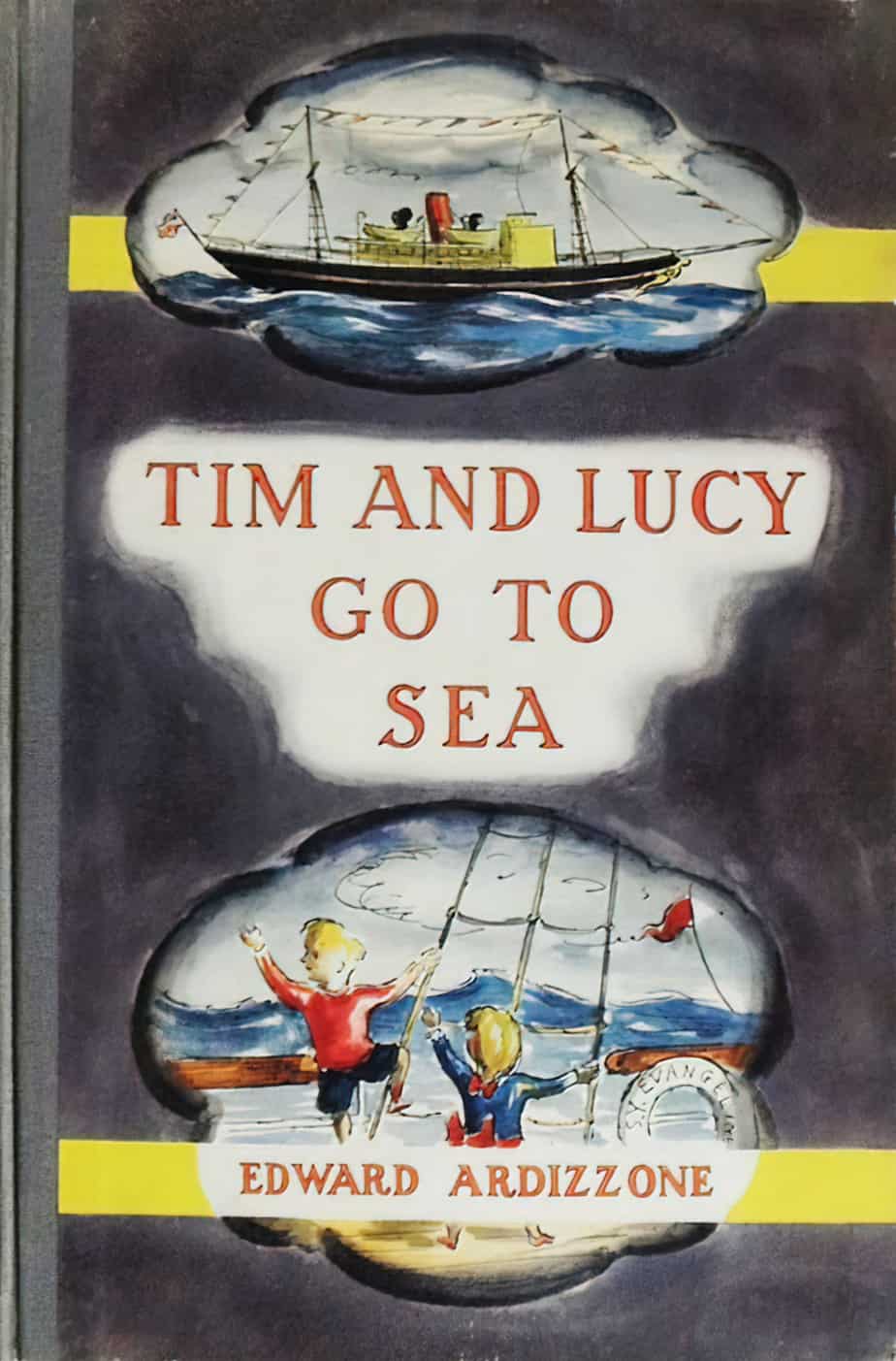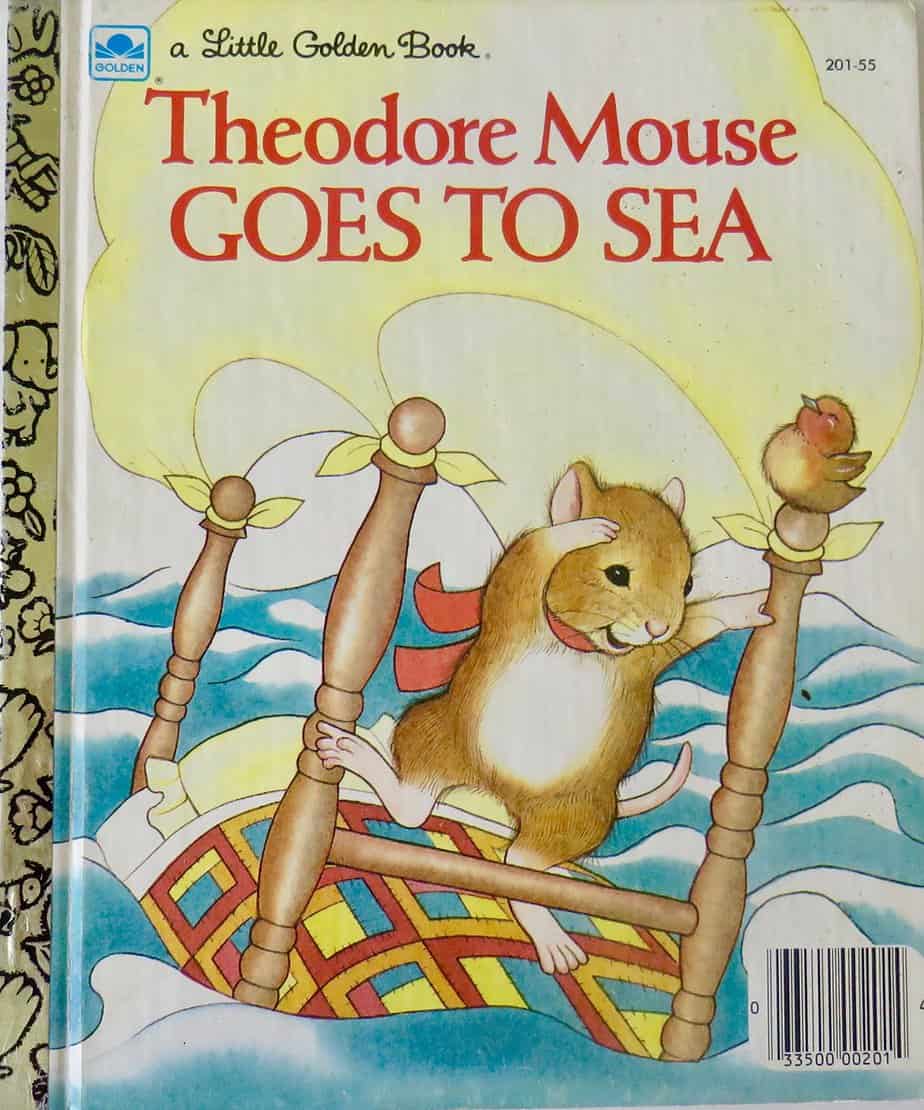Theodore Mouse Goes To Sea is a Little Golden Book first published 1983. The illustrations are by Lucinda McQueen. There is a series of stories about Theodore the Mouse.
I find this particular picture book an unremarkable read, and since I took a close look at The Sailor Dog earlier in the week, it’s worth examining what makes the ‘animal goes to sea’ story by Margaret Wise Brown so much more effective.
STORY STRUCTURE OF THEODORE MOUSE GOES TO SEA
SHORTCOMING
Like a lot of children’s stories, Theodore Mouse starts from a place of boredom. He goes to sea because he wakes up and every day is the same. The only thing that changes is the sea. We infer from that, as does the mouse, that the sea holds great adventure.
The symbolism of altitude is utilised here, with Theodore sitting in a high place (on the roof), gazing as far as his eyes can see, contemplating his adventure. Windows are used in the same way.
Mice as child stand-ins are common throughout children’s literature.
DESIRE
Theodore Mouse wants something to happen. So, like a superhero who sets out to save the world, his desire for something comes from within. Boredom.
This is the narrative used by advocates of screen-free childhoods, based on the theory that if children are deprived of stimulation they will make their own fun.
OPPONENT
Unlike Wise Brown’s story, Theodore Mouse Goes To Sea is a more classically mythic structure, in which both the environment (the storm) and the ‘human’ pirates form joint opposition. Wise Brown’s story is a parody of the Robinsonnade; this is a straight sea adventure for the preschool set. I’m sure the preschool set doesn’t know that Wise Brown’s book is a parody, which probably makes these two Little Golden Books equal in their eyes. The difference is that the adult co-reader gets more out of Wise Brown’s book.
PLAN
First, Theodore uses his bed and sheets to make a bed and go out to sea.
The bed as ship trope is fairly common in children’s literature (I’ve used it myself, in The Artifacts). Perhaps most famously, it’s used by Margaret Wild and Jane Tanner in There’s A Sea In My Bedroom.
When he comes up against the pirates his plan is to beat the baddies with his pillows.
BIG STRUGGLE
The unintended consequence of beating the pirates with pillows is that the burst open and the baddies become covered in feathers, which humiliates them by making them look like chickens. (Whoever decided ‘chicken’ meant ‘coward’ didn’t once meet a live chicken, methinks. Chickens are the bolshiest animal I know.)
The ‘feather as weapon’ has been utilised since by Australian children’s band The Wiggles. Captain Feathersword has a sword made of feathers. This is acceptable to any gatekeeper of children’s media because no one could possibly be hurt with a feather. The feather as weapon is therefore at the extreme ‘benign’ end of the Chekhov’s Toy Gun continuum.
ANAGNORISIS
The anagnorisis is of the proxy, pathetic fallacy variety.
The sky cleared. The sun shone.
We’re never told what that revelation is, because I don’t think there is one. This is more of a carnivalesque adventure, in which a child character goes off on an unlikely, fantasy adventure away from authority figures, overcomes adversity, then returns to safety. The entire point of such stories is to have fun.
NEW SITUATION
One of the main human desires/needs is to be taken seriously by our peers. Theodores is richly rewarded in this regard. He sits on the roof with all his mousy peers, who listen wrapt as he tells his tales of adventures at sea.
The mythic structure of this tale, as well as this particular ending, make this a typically masculine story, though the mice friends do help him to put his bed back in his bedroom, which lends a co-operative (traditionally feminine) vibe. Wise Brown’s book is masculine in some ways — Sailor Dog is a ‘real’ sailor only once he’s wearing the masculine sailor uniform. But Wise Brown hasn’t used a masculine story structure — her big struggle scene is not the point.
The illustrations in Theodore Mouse Goes To Sea are very functional but otherwise unremarkable. There is an unnamed little friend who accompanies Theodore — the bird — a common illustrator trick to add extra narrative to the story. Apart from that, these illustrations are completely hygge, which is probably why they were chosen — a scary illustrator would turn the pirate rampage into something terrifying.
FURTHER READING


